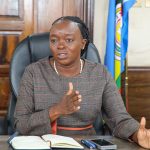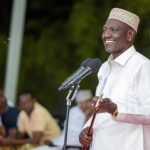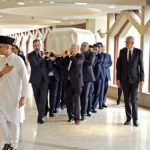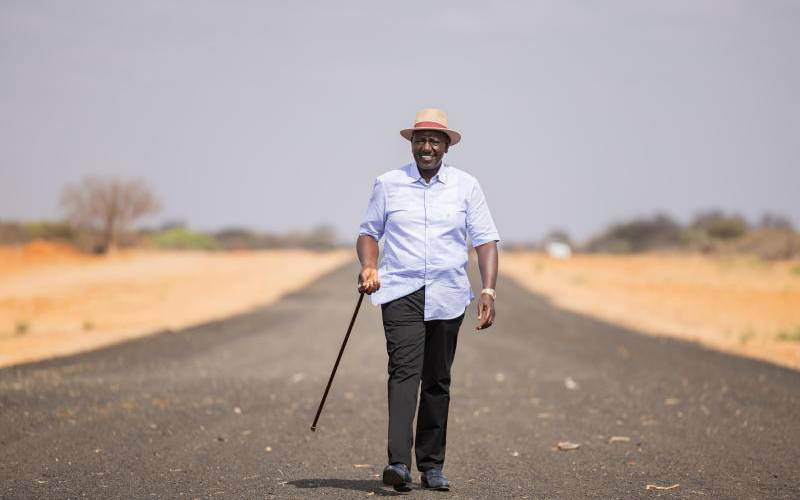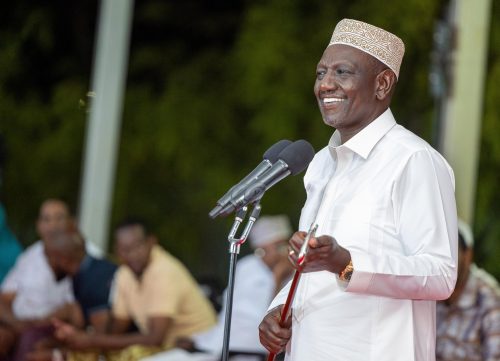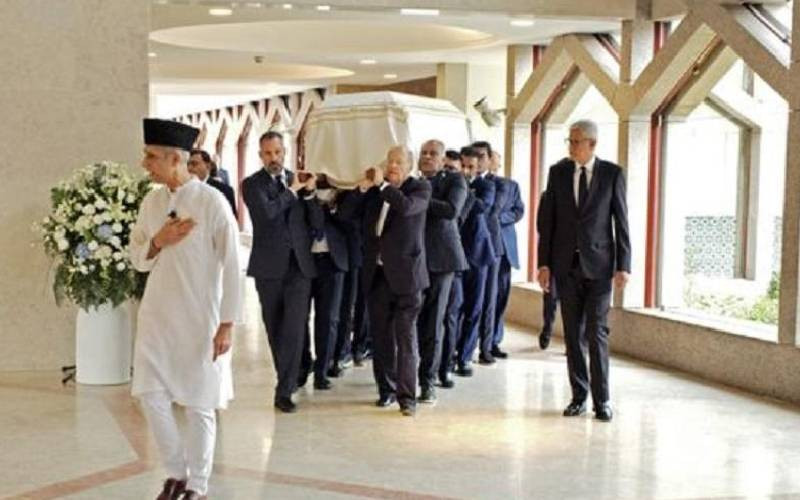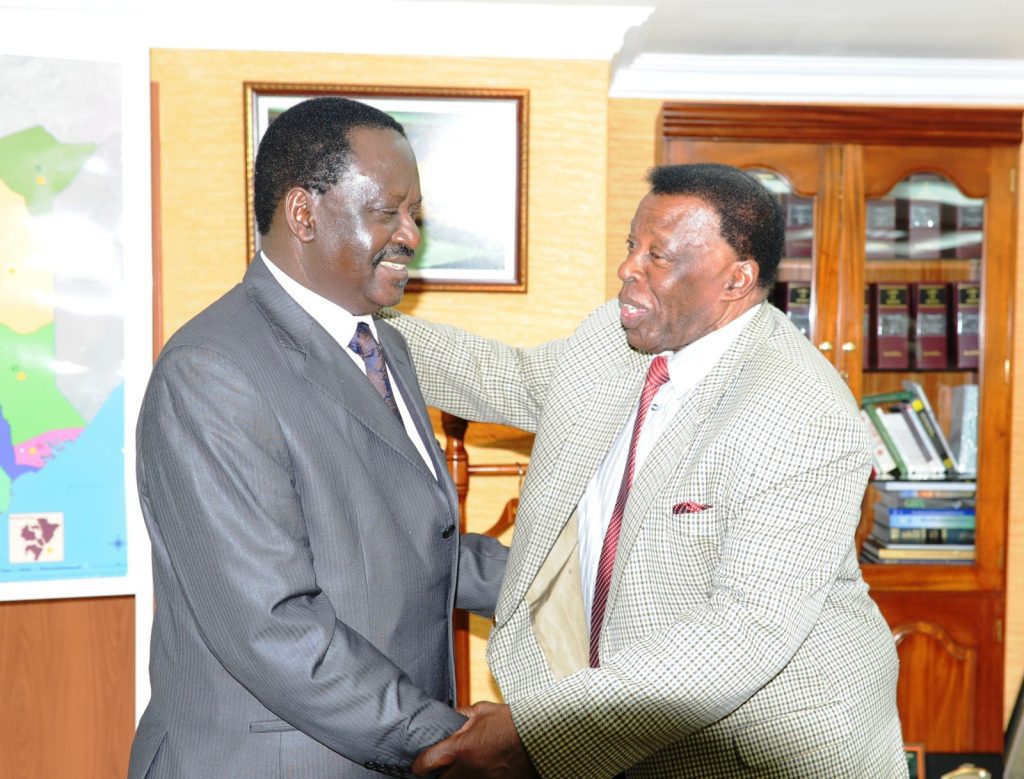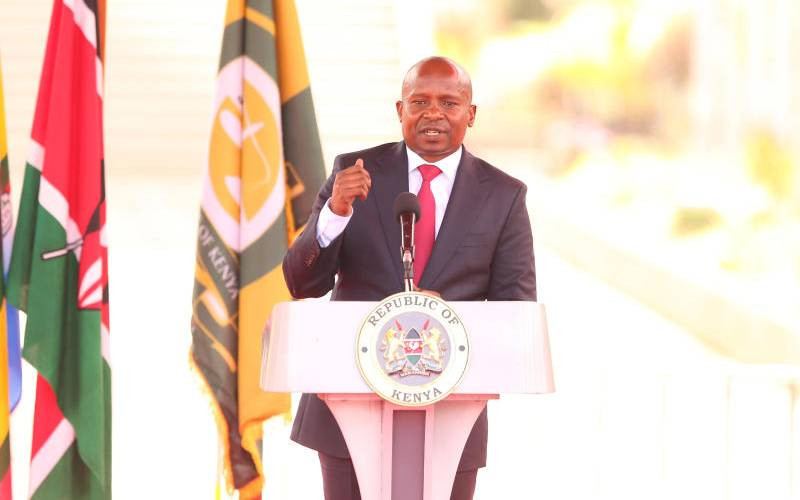We have not, in this country, had a presidential era where succession politics has reared its head as early as it has this season.
President William Ruto, Kenya’s fifth president has done slightly more than two years. He has not exactly counted his half-term. The half date will be on March 13. Yet the political arena has grown hot political talk that is laced with near-ethnic epithets.
The running theme, one gathers from the talk and messages by Ruto’s opposers, is that he will and, must be the country’s first president to serve for only one term.
The man who, in my writings, will be known as my classmate, the former Deputy President Rigathi Gachagua, has been telling the country that he and his newfound comrades (Wiper Leader Kalonzo Musyoka, DAP-K Leader Eugene Wamalwa, Narc Kenya leader Martha Karua and former Cabinet Secretary Fred Matiangi) will launch a coalition that will ensure Ruto makes history as Kenya’s first president who couldn’t manage a second term.
On his part, Ruto, perhaps sensing a well-oiled push to deliver on that threat against him, is connecting with the grassroots as never before. On Friday he closed his tour of the North Eastern region where he made statements that point to a man who is not sleeping a wink. He discussed one of the great challenges that have faced the region, the case of registration as citizens.
Ruto ordered the removal of vetting as a condition to award of national identification cards, a decision earlier cleared by Cabinet. That will no doubt endear him to the Somali vote in 2027.
Before venturing into North Eastern, Ruto spent seven days in western Kenya where he made several visits to the border counties of Bungoma and Busia, three to Bungoma to be specific, and other days in Kakamega, leaving a record that the voters are still speaking about.
The visit begun in Cheptais on January 19, where the call to modernise markets in Chwele and Kipsigon was made. Ruto, in response, reiterated his administration’s focus on ensuring equitable development across all counties. That was followed with benefits on eight projects around modern markets, electricity, roads and the sugar sector, in Bungoma alone on three separate visits as I have indicated.
The day after Cheptais, Ruto in Kakamega launched the Mumias sugarcane farmers’ bonus, which started to be paid the week he was still on the ground. Farmers began getting deposit messages of amounts ranging from Sh17,000 to Sh350,000 as the President addressed the revival of Nzoia Sugar which has seemed to hit the headwinds. Ruto said a re-advertising bid of Nzoia Sugar Company for a strategic investor is up, which speaks to the promise of reviving the sugar sector.
But as people opposed to Ruto go about warning about a one-term president, the voters in regions that have never seen a president are thinking differently.
Vote basket
That is why I am giving out the following argument this Sunday
The Mt Kenya region, which contributed 49 per cent to Ruto’s vote basket in the 2022 presidential election, has today turned away from him. The region will, from now on, work for his downfall.
Stay informed. Subscribe to our newsletter
One can safely argue that the disaffection that has grown on the mountain against Ruto emanates from the pain of contributing a good share of the 7.1 million votes that he got in 2022. Of that vote, 3.5 million came from the Mt Kenya region and its diaspora. That is nearly half of his total vote. The question now remains, will Ruto get that kind of vote from another region to clinch victory in 2027?
As matters stand today, his loss of the Mountain is a done deal, a foregone conclusion. Pundits of the country’s political history can affirm that the Mountain has made a decision on Ruto and will not look back or entertain any thought about him.
But as the Mountain, led by my classmate Gachagua, foments stuff around Ruto’s name aiming to make him unelectable, it is also revealing its weakness. That weakness is a growing sense of entitlement to the country and the highest office in the land, the presidency. That is a matter that has disturbed the region since the anti-Vice President Daniel Arap Moi 1976 changed the constitution movement where the mountain at that time represented by what came to be known as the Kiambu Mafia ran a campaign that the seat of the president should not directly go to a sitting VP.
The objective was to have the seat remain in Kiambu and the Mountain.
That is why I want to state here that while many claim that Ruto is going to be the first president to serve for one term, I hold a contrary view that he will clinch a comfortable second term at the 2027 presidential election.
Here is why.
Number One. The Mountain in 2022 gave Ruto the presidency by commission but in 2027 they will give him the same office by omission.
Number Two is a question. How possible was it for Ruto to emerge from a tethered Deputy President to win in a contest pitting a president who had placed him on a controlled rope for four years?
Victory card
Number Three. Apart from Raila Odinga, the country now does not have a politician who can match Ruto’s political clout and charisma. Ruto’s magic that sent him to work with Raila also gave him the victory card in 2027.
Let me now look at these issues in greater detail, beginning with Number One.
The Mountain’s opposition to Ruto is galvanising the rest of the country around him. That is why my argument is that the Mountain in 2022 gave Ruto the presidency by commission, that is through voting for him, and in 2027 it will do the same by omission, refusing to vote for him. The more the Mountain pulls away from Ruto and throws mud at him, the more other regions of the country will coalesce around him.
The Mountain counties and their diaspora could be the largest vote block in terms of numbers, but it cannot single-handedly pull together the 50 per cent + 1 vote to give the country a president.
No region in the country can, alone, decide who becomes president. They must work with others.
Ruto will not get the 3.5 million votes from the Mountain as he did in 2022. But he has been shaping a new campaign slogan and tactfully working towards achieving it since he was sworn into office.
In 2027, three regions will replace his Mountain loss even before we count Rift Valley, Nyanza and Western. The regions are Coast, North Eastern, Narok, Kajiado and one county in Nyanza.
According to the 2022 voter register, the two regions and three counties had 4,258, 949 registered voters, which Ruto will bag in 2027.
That alone will cancel the threat posed by him losing the Mountain vote that, according to the 2022 voter register, had 4.1 million voters. (Kiambu, Muranga, Nyeri, Nyandarua, Kirinyaga and Nakuru)
Even if we expanded the Mountain region by including upper and lower Eastern, after Kalonzo joined the expanded GEMA house, the voter register indicates that Ruto’s new support that is emerging from the rest of the country will give him victory in 2027.
Top contenders
The Mt Kenya region and the upper Eastern had 4,453,108 votes, according to the 2022 voter register. Lower Eastern, which encompasses Kitui, Machakos and Makueni had 1,699 724. That totals to 6,152 832, plus Laikipia’s 263 012. Assuming that the county will vote entirely with the Mountain, that gives us a total of 6,415,844 voters. If we split the Nairobi vote of 2,415 310 votes into two, assuming the Mountain commands half of the city’s voting population, it gives it an extra 1,207655, which adds its total vote to 7,623,499.
The rest of the country, which encompasses Coast and North Eastern, Rift Valley and Northern Kenya, Nyanza and Western, commands Kenya’s largest population of 12,479,534. Assuming that Nairobi’s 2.4 million votes will be shared between the two top contenders, the total vote basket Ruto is eying from non-Mt Kenya will have an extra 1,207 655. That gives his basket 13,687, 189 votes.
Number Two. Ruto operated from a disadvantage when he was Deputy President. He was stripped of power and any signs of it. We have been told by none other than his greatest supporter then, my classmate, that Ruto was even denied funds to run operations of his office. How did such an ensnared man win the election? It was out of tact that drove him to focus on the people’s hearts. His hustler versus dynasty slogan endeared him to the country’s populations that are struggling.
Ruto also presented the Mountain voters with a difficult decision with zero options. He humped on the string of supporting their son Uhuru Kenyatta at the 2013 and 2017 elections, and so it was time for the people to return the honour, which they did.
In the current election cycle, as all can see, Ruto has changed the campaign slogan. He is working with what he has called one nation. He is reaching the villages of the entire country.
Finally, Raila has been Ruto’s main challenger in any election in the country. But now, he is focused on clinching the AUC chairmanship seat. If he wins, we are looking at very interesting times ahead, which may disappoint the anti-Ruto forces.

